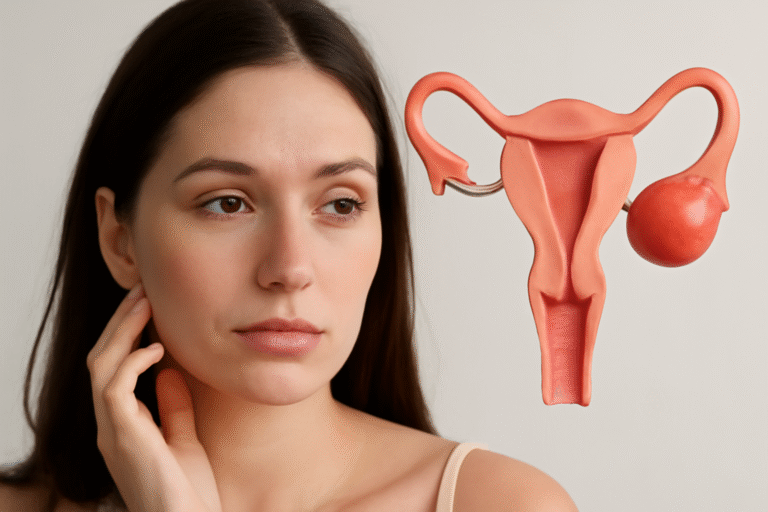What Is the AMH Anti-Müllerian Test?
A straightforward blood test for women, the AMH anti-Müllerian test assesses anti-Müllerian hormone levels (AMH). Produced by tiny ovarian follicles, this hormone is a key indicator of ovarian reserves, the number of eggs left in the ovaries. Unlike other fertility hormones such as estrogen or FSH, AMH levels stay constant across the menstrual cycle, so this test is a consistent and easy way to evaluate reproductive potential.
Unlike other fertility hormones such as estrogen or FSH, AMH levels stay consistent throughout the menstrual cycle, so this test is a dependable and practical tool for evaluating reproductive potential.
What Does the Anti-Müllerian Hormone Do?
Before starting the test, one must first respond: What is the function of the anti-Müllerian hormone? AMH serves two main functions:
- Regulating Follicle Development: AMH regulates follicle development by controlling ovarian follicle growth, therefore preventing too many eggs from maturing at once.
- Reflecting Ovarian Reserve: Higher AMH levels indicate a larger pool of remaining eggs; lower levels indicate reduced reserves.
Fertility planning depends on this hormone since it helps to forecast how the ovaries might react to IVF-related therapies.
How the AMH Test Works: A Step-by-Step Guide
Step 1: Consultation and Preparation
The AMH anti-Müllerian test needs no preparation. Unlike testing for hormones such as progesterone or estrogen, clinicians can assess AMH on any day of the menstrual cycle. Unless your doctor advises differently, you need not fast or change drugs.
Step 2: The Blood Draw
Usually, from a vein in your arm, the test calls for a conventional blood draw. Discomfort is low (comparable to a regular blood test), and the procedure lasts under five minutes.
Step 3: Lab Analysis
Technicians in a lab run your blood sample through immunoassay methods to determine AMH levels. Typically, findings are accessible in 1–3 days.
Understanding AMH Test Results
What is a “Normal” AMH Level?
AMH levels are expressed as nanograms per millilitre (ng/mL). Among the general rules:
- High AMH: Above 3.0 ng/mL, common in PCOS or high ovarian reserve
- Normal AMH: 1.0–3.0 ng/mL (usually for women under 35).
- Low AMH: Under 1.0 ng/mL (could suggest reduced ovarian reserve).
What Affects AMH Levels?
- Age: Levels drop naturally as women near menopause.
- PCOS: Often resulting from excess follicles, PCOS raises AMH.
- Medical History: Surgical procedures, chemotherapy, or autoimmune diseases can reduce AMH.
Also Read: Learn About AMH Level
Why the AMH Test Procedure Matters
Accuracy and Reliability
Ovarian reserve is best assessed by the AMH test, which is quite accurate. But it does not ensure pregnancy success or assess egg quality. It works best in conjunction with other tests, such as FSH levels and AFC ultrasound.
Who Should Get Tested?
- Women considering fertility treatments—IVF, egg freezing.
- Those with suspected PCOS or erratic cycles.
- People are worried about ovarian health or early menopause
The Science Behind the Test: How AMH Is Measured
Lab Techniques Explained
Convenient: No cycle timing or fasting necessary.
Predictive: Provides information on ovarian reserve rather than egg quality.
Versatile: Used for menopause prediction, PCOS diagnosis, and fertility planning.
Knowing the AMH anti-Müllerian test and its simple process will help you to actively control your reproductive health. Results should be interpreted by a specialist, who will also help you decide what to do next. These techniques are very sensitive and standardized, therefore guaranteeing uniform outcomes across testing sites.
Limitations of the Test
- Not a Standalone Diagnostic Tool: AMH levels must be read in the clinical context.
- Variable Ranges: Varying Ranges. Always go over findings with your provider.
Key Takeaways: What to Know About the AMH Test
- Convenient: No cycle timing or fasting necessary.
- Predictive: Provides information on ovarian reserve rather than egg quality.
- Versatile: Used for menopause prediction, PCOS diagnosis, and fertility planning.
Knowing the AMH anti-Müllerian test and its simple process will help you to actively control your reproductive health. Results should be interpreted by a specialist, who will also help you decide what to do next.





[…] Also Read: Importance Of AMH Test For Fertility […]
[…] Also Read: Why AMH Level Is Important For Fertility […]
[…] AMH Testing: This test checks the ovarian reserve by looking at the levels of Anti-Müllerian Hormone released by growing follicles. […]